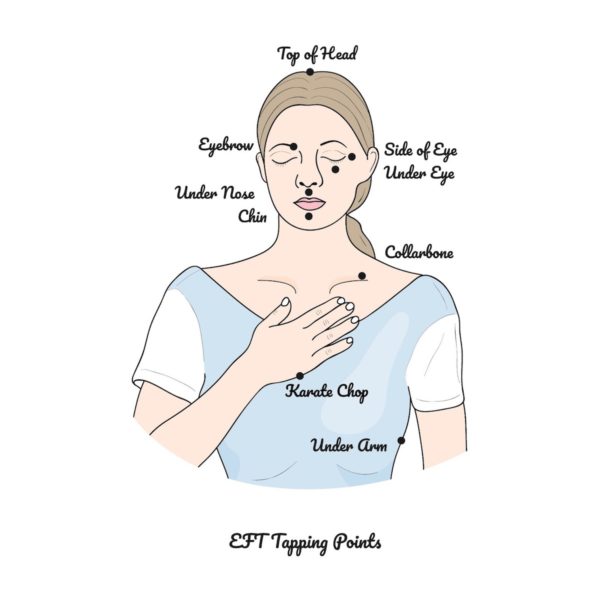Not too long ago, some considered it laughable that things like breathwork or meditation could help relieve stress. Now, however, such treatments are commonplace alternatives alongside traditional medical care.
We’ve come a long way, and it’s opened up the door for exploration into other accessible methods for help dealing with stress and anxiety.
Today, we’re looking into something called the Emotional Freedom Technique (EFT), also known as tapping therapy.
Similar to acupuncture, EFT uses the meridian points to restore balance to your body’s energy. Only, instead of needles, you use a tapping method with your fingers.
Practitioners say tapping on these acupressure points can help activate calming signals in the brain.
But does it actually help? Let’s investigate!
What We Know
Tapping therapy has indeed been found to decrease feelings of anxiety and depression, reduce pain, relieve symptoms of posttraumatic stress disorder, and increase happiness.
In fact, in one study an improvement was found in 90% of patients who received tapping therapy for anxiety – compared to 63% of participants who received CBT (cognitive behavioral therapy).
Many of the participants also showed improvements in heart rate, blood pressure, and levels of the stress hormone cortisol.1
Another study compared the use of EFT against standard care options for anxiety symptoms. It found that the participants who received EFT saw a significant decrease in anxiety scores compared to participants receiving other care.2
But what about real-world results? EFT practitioners have reported that tapping therapy could resolve even complex PTSD in 10 sessions or fewer. And almost 90% of those respondents stated that less than 10% of their clients make little or no progress.3
Keep in mind that these statistics are being self-reported by practitioners (and are thus possibly inflated). They don’t seem unfounded, however…
Researchers have studied the impact of EFT tapping on veterans with PTSD versus veterans receiving standard care.
Within a month, the participants receiving EFT showed significantly reduced psychological stress – so much so that more than half of the EFT test group no longer fit the criteria for PTSD.4
What We’re Still Learning
Despite studies that support the benefits of EFT, there isn’t really a consensus among experts about its effectiveness. Science is also not able to pinpoint exactly HOW it works.
Here’s how tapping therapy is explained: meridian points are places where your energy (or lifeforce) flows, and keeping this energy balanced is key to overall health. Applying pressure to these points (whether with needles or fingers) is thought to send signals to the part of your brain that controls stress, helping to resolve any imbalance.
This is all theoretical, at this point. See, even though acupuncture, acupressure, and other modalities dealing with meridians and energy points have been in use for centuries, modern science is not able to accurately measure this type of energy work.
So, for now, most health professionals seem to agree that tapping therapy is a helpful addition to mental health care, but that it shouldn’t replace professional treatment – especially if you’re dealing with more serious issues.
Tapping therapy is also being implemented by practitioners to help people with procrastination and focus issues, low self-esteem, feelings of shame, cravings, and sleep troubles. There is not yet any research to support these uses, however.
The Bottom Line
Tapping therapy is a simple, potentially effective technique that you can perform yourself or with the guidance of an EFT-certified practitioner.
If you’re not knowledgeable about meridian points, your results may not be as effective, so it’s helpful to have someone guide you through a tapping session before trying it on your own.
Please keep in mind that, when addressing mental health issues, tapping should only be one part of the equation, not your sole source of mental health treatment.

How do I get started?
| Toes In |
|
| Waist Deep |
|
| Full Immersion |
|





